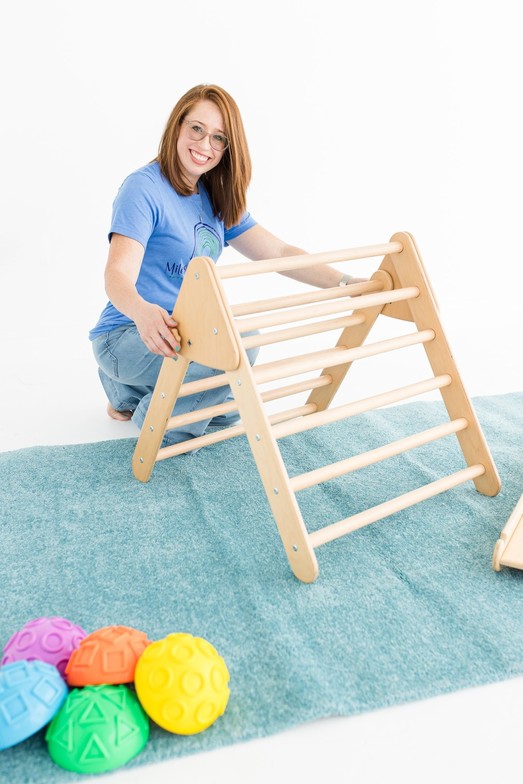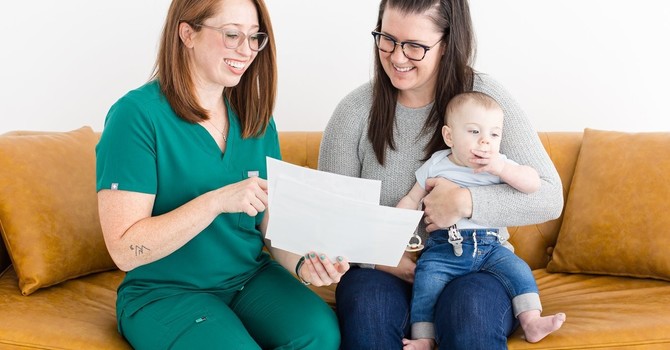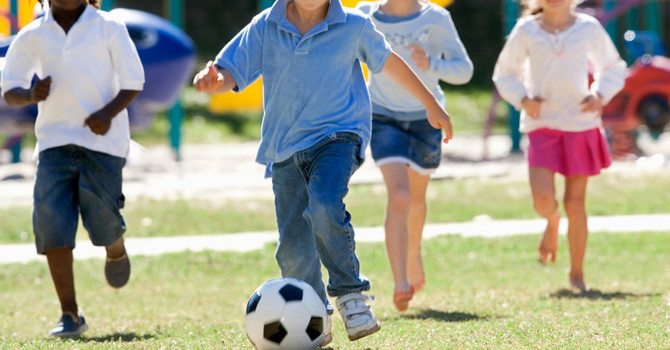
As a pediatric physical therapist, one of the questions I’m asked most often is: “What toys should I buy to help my child’s gross motor development?” The good news is that the best toys don’t have to be flashy, expensive, or battery-operated. In fact, toys that encourage movement, exploration, and creativity often give children the biggest boost in building strength, coordination, and confidence in their bodies.
Whether you’re shopping for birthdays, holidays, or simply refreshing your playroom, here are the top five things I personally consider and encourage my families to consider when choosing toys that truly support gross motor milestones:
1. Choose Toys That Encourage Movement
Look for toys that naturally invite your child to get up, reach, crawl, climb, or jump. Movement is the foundation of all gross motor development.
Think: push toys, balance bikes, stepping stones, tunnels, ride-ons toys, climbing wedges, mini trampolines, or even a simple ball.
Why it matters: Movement-based toys help strengthen major muscle groups, improve coordination, provide sensory experiences, and support balance—skills that carry over into walking, running, and playing confidently.
2. Prioritize Open-Ended Play
Open-ended toys are anything that don’t dictate exactly how to play with them. They encourage kids to problem-solve, create their own obstacles, and experiment with movement.
Think: foam blocks, balance beams, cushions, stools, cones, hula hoops, or even large cardboard boxes.
Why it matters: When children invent their own tasks, they naturally climb, crawl under, jump over, and lift objects—engaging core strength, motor planning, and confidence.
3. Pick Toys That “Grow” With Your Child
The best toys are versatile and adaptable across ages and stages.
Think: a Pikler triangle that can be used for early pulling-to-stand and later for climbing, a scooter board that can support tummy time for younger kids and upper-body strengthening for older ones, or a large activity cube for early sitting development to those first steps.
Why it matters: Toys that evolve with your child provide long-term developmental value, reduce clutter, and support skills from infancy through preschool.
4. Look for the Just-Right Challenge
You want toys that are safe but still offer opportunities to stretch a child’s abilities—what we call the “just-right challenge.”
Think: a balance beam that’s low enough to step on confidently but narrow enough to challenge stability, stepping stones with different heights or textures, or balance bikes and scooters that your child can master with practice.
Why it matters: The right amount of challenge builds resilience, bravery, and skill mastery—without unnecessary frustration or fear.
5. Choose Toys That Support Whole-Body Development
Gross motor development isn’t just legs—it’s core, arms, balance systems, coordination, and sensory processing.
Think: climbing toys for strength and coordination; swings for balance and sensory regulation; balls for bilateral coordination; jump ropes or hopscotch for speed and agility.
Why it matters: The more areas of the body a toy engages, the more well-rounded the child’s motor development becomes.
Bonus Tip: Simplicity Wins Every Time
Often, children don’t need the most expensive toy—they need opportunities. A laundry basket becomes a push toy. Painter’s tape becomes a balance beam or hopscotch on the floor. Pillows become a crash pad or obstacles. Nature becomes the biggest gross motor playground of all.
When selecting toys, think less about “entertainment” and more about opportunity. The right toys help children build strength, coordination, problem-solving skills, confidence, and a love for movement—all through play.
At Milestones At Play, we help children strengthen their bodies, grow their confidence, and discover the joy of movement through purposeful play. If you’re wondering whether your child could benefit from extra support, don’t hesitate to reach out—we’d love to partner with you on your child’s journey.


